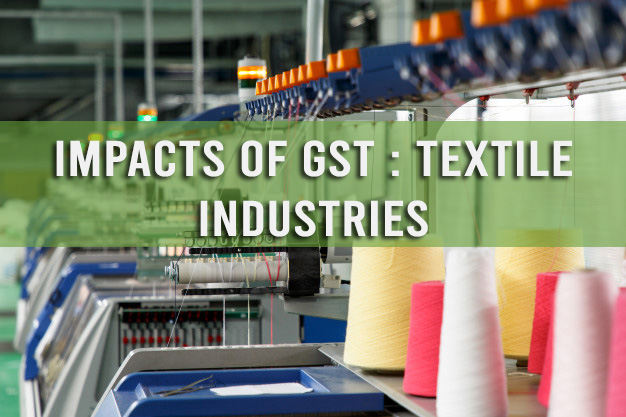
Our software is now updated as per the latest GST changes. Take free demo now

Enterprise Resource Planning (ERP) systems have transformed
the textile manufacturing industry, driving integration, efficiency, and
data-driven growth across all departments. By connecting material sourcing,
production, inventory, sales, finance, and more in a single platform, ERP
fundamentally improves both day-to-day operations and long-term performance.
How ERP Impacts Each Textile ManufacturingFunction
1. Production Planning & Control
ERP allows real-time planning and monitoring of production schedules, resource
allocation, and shop floor operations. This reduces delays, helps identify
bottlenecks, and ensures timely delivery—raising on-time delivery rates by over
30–40% in some cases.
KPI Impact:
2. Inventory & Materials Management
Textile ERP gives complete visibility of raw material and finished goods
inventory, automating stock tracking and reorder levels. This minimizes
overstocking or shortages, shrinking inventory costs by about 20–30% and
improving raw material traceability.
KPI Impact:
3. Procurement & Supply Chain
ERP software streamlines supplier management, automates purchasing, and tracks
every order and delivery in real time. It shortens procurement cycles and
enables stronger vendor negotiations—improving supply chain visibility and
cutting delays by 20–40%.itrobes+3
KPI Impact:
4. Quality Management
Integrated quality control modules let textile firms set and track testing
protocols at each stage, ensuring defect rates are minimized. ERP supports
consistent standards and compliance, often reducing customer complaints and
defects by 30% or more.infopine+2
KPI Impact:
5. Textile Manufacturing
Centralized order processing increases accuracy and speed, giving instant
status and traceability for every sale. Automated pricing, discounts, and order
tracking greatly improve sales cycle times and customer satisfaction.reddit+3
KPI Impact:
6. Finance & Costing
ERP automates cost tracking, budgeting, and financial reporting, reducing
manual errors and accelerating closings. This transparency boosts profitability
analysis and enables faster, data-driven decisions.
KPI Impact:
7. Analytics & Compliance
With every workflow digitized, ERP empowers predictive analytics, quick
regulatory reporting (such as GST or ESG), and rapid responses to audits or new
standards. Compliance costs and timelines are significantly reduced.
KPI Impact:
To What Extent Can ERP Transform Textile KPIs?
The magnitude of improvement varies, but leading textile
manufacturers routinely report:
These gains are only possible with committed ERP
implementation, process discipline, and regular system usage across all
business functions.
Enterprise Resource Planning (ERP) systems are not just for
manufacturers; they offer powerful benefits to textile traders as well. Textile
traders operate in a competitive environment where buyer engagement, order
accuracy, timely invoicing, and seamless dispatches are critical to success.
Implementing ERP transforms these functions by centralizing data, automating
workflows, and enhancing communication—all contributing directly to improved
business performance.
How ERP Helps Textile Traders Engage Buyers and Manage
Operations
1. Buyer Engagement & Catalogue Sharing
ERP enables textile traders to maintain a centralized,
easily updatable digital catalogue of products. Buyers can be sent timely,
organized catalogues via email, web portals, or integrated CRM modules. This
simplifies buyer access to product information, pricing, and availability,
fostering stronger engagement.
Impact on Business:
KPI Impact:
2. Order Management & Processing
Through ERP, traders can automate order entry, validation,
and tracking. Integrated systems reduce manual errors by linking orders to
current inventory and production status. Real-time order status shared with
buyers increases transparency and trust.
Impact on Business:
KPI Impact:
3. Invoicing & Payments
An ERP system automates invoice generation linked directly
to orders and dispatches. This reduces errors and speeds up billing cycles.
Buyer portals or automated communication features notify buyers promptly,
helping to accelerate payment cycles.
Impact on Business:
KPI Impact:
4. Dispatch & Logistics Management
ERP tracks dispatch schedules, shipment status, and delivery
confirmations. Automated alerts and documentation sharing enhance coordination
with buyers and logistics partners, reducing delays and ensuring timely
delivery.
Impact on Business:
KPI Impact:
5. Communication & Collaboration
ERP platforms often integrate communication tools, allowing
traders to send order updates, resolve queries, and manage follow-ups from a
single dashboard. This unified communication enhances relationship management.
Impact on Business:
KPI Impact:
Extent of ERP Impact on Textile Trading KPIs
Leading textile traders report transformative improvements
with ERP:
|
Function |
KPI Improvement Range |
Business Impact Summary |
|
Buyer Engagement |
+20–35% |
More buyers interact and reorder |
|
Order Management |
+30–50% accuracy, -40–60% time |
Accurate orders and faster processing |
|
Invoicing & Payments |
+40–60% accuracy, -30–50% time |
Faster cash flow and fewer disputes |
|
Dispatch & Logistics |
+25–40% on-time, -30–50% delays |
Efficient deliveries and cost savings |
|
Communication |
-40–60% response time, +15–25% retention |
Enhanced relationships and loyalty |
Conclusion
For textile traders, ERP systems create a seamless,
connected environment that improves every critical function—from engaging
buyers with dynamic catalogues to managing orders, invoicing, dispatch, and
communications effectively. This leads to measurable improvements in accuracy,
speed, customer satisfaction, and financial performance. Investing in ERP
technology is a strategic move to build stronger buyer relationships and grow
textile trading businesses sustainably.
This comprehensive integration of functions drives a
competitive edge, ensuring textile traders can respond swiftly, operate
transparently, and scale efficiently in the dynamic textile marketplace
© Copyright digifysoft 2025.